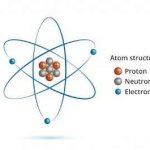Potential difference, also known as voltage, is the difference in electrical potential energy between two points. It is measured in volts (V). Potential difference is the force that causes electric current to flow.
When there is a potential difference between two points, electrons will flow from the point with the higher potential energy to the point with the lower potential energy. This flow of electrons is what we call electric current.
The amount of current that flows depends on the size of the potential difference and the resistance of the circuit. The resistance of a circuit is determined by the materials used to make the circuit and the length of the circuit.
Potential difference is a very important concept in physics and engineering. It is used to explain the behavior of many different electrical devices, such as batteries, light bulbs, and motors.
Here are some of the applications of potential difference:
- Batteries: Batteries use chemical reactions to create a potential difference. This potential difference is used to power devices, such as flashlights and cell phones.
- Light bulbs: Light bulbs use a potential difference to heat a filament, which then produces light.
- Motors: Motors use a potential difference to create a magnetic field, which then causes a rotating motion.
Potential difference is a fundamental concept in physics and engineering. It is used to explain the behavior of many different electrical devices.
Potential difference is defined as the difference in potential between two points that represent the work involved or the energy released in the transfer of a unit quantity of electricity from one point of a circuit to the other.

